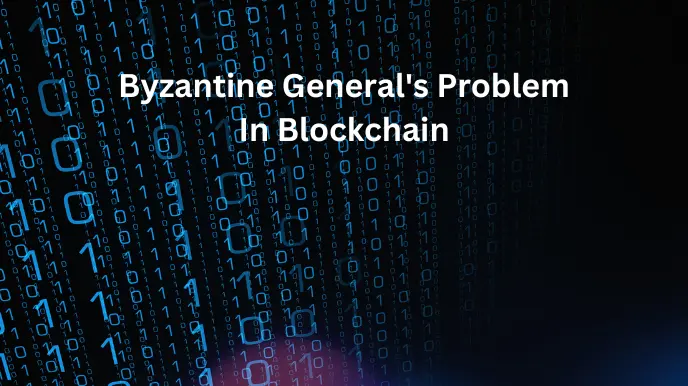How Blockchain Tackles the Byzantine General's Problem to Stay Secure

Blockchain technology has revolutionized how we think about trust and security in digital transactions, but at the heart of this innovation lies a complex problem called the Byzantine Generals Problem.
If you've heard this term but are unsure of what it really means, don't worry—you're not alone! Let's delve into this intriguingly complex problem, break it down into simple terms, explain how it works in the context of blockchain, and explore how this challenge is solved in practice.
What Is the Byzantine Generals Problem?
Imagine a group of generals planning to attack a city. They are separated by distance and can only communicate via messengers. To succeed, all the generals need to coordinate their attack, but here's the catch: one or more of them may be traitors, trying to send false messages to confuse the others.
The general's problem is how to agree on a plan (attack or retreat) despite the risk of some generals being dishonest.
This scenario is a metaphor for the challenge of reaching consensus in a decentralized system. In a decentralized system like blockchain, there's no single leader or central authority to trust. Instead, multiple independent participants (called nodes) must agree on the same version of truth, such as the validity of transactions.
The risk is that some nodes might behave maliciously, either due to attacks or errors, making it difficult for the network to reach a shared decision.
How Byzantine General’s Works in Blockchain
In blockchain networks, like Bitcoin or Ethereum, the Byzantine Generals Problem is reflected in how nodes (computers) need to agree on which transactions are valid. Some nodes might try to cheat by broadcasting false transactions or pretending to have more money than they do.
The challenge is for the network to reach a consensus—agreeing on the same state of the blockchain ledger—even when some participants might be unreliable or malicious.
This is where consensus algorithms come in. They are the guardians of the network, the rules that ensure all honest participants are on the same page, and they play a crucial role in maintaining the security of the blockchain network.
Proof of Work (PoW) used by Bitcoin requires nodes to solve complex math problems to validate transactions and create new blocks. This makes it costly for malicious nodes to disrupt the network because they would need more computational power than the majority of the network to succeed.
Proof of Stake (PoS), used by Ethereum 2.0, selects validators based on the amount of cryptocurrency they "stake" or lock up in the network. If they try to act maliciously, they lose their staked assets, which discourages bad behavior.
These consensus algorithms help ensure the network remains secure and honest, even when some participants aren't.
How Can the Byzantine Generals Problem Be Solved?
The solution to the Byzantine Generals Problem in blockchain is the use of Byzantine Fault Tolerance (BFT) mechanisms. These systems are designed to handle a certain level of bad actors (up to one-third of nodes) without compromising the network's security or functionality.
For instance, in Proof of Work, the cost of conducting a 51% attack (where an attacker controls more than half of the network's computational power) is so high that it's impractical for most malicious actors. Similarly, in Proof of Stake, the economic penalties for acting dishonestly make it unlikely for bad actors to gain control.
In essence, blockchain's design ensures it's more profitable for participants to follow the rules than cheat. This incentive-based structure is key to solving the Byzantine Generals Problem in decentralized systems.
Can Blockchain Be Hacked?
While blockchain networks are highly secure, they aren't completely immune to attacks. One potential vulnerability is the 51% attack. If an attacker gains control of more than 51% of the network's computing power (in PoW) or staked assets (in PoS), they could manipulate transactions, double-spend coins, or disrupt the network.
However, carrying out a 51% attack on large, well-established blockchains like Bitcoin or Ethereum is extremely difficult and expensive, making these networks secure against most threats.
Conclusion
The Byzantine Generals Problem illustrates the challenge of reaching an agreement in decentralized systems where some participants may be dishonest. In blockchain, this problem is solved through consensus algorithms like Proof of Work and Proof of Stake, which ensure that the network can maintain trust and security even in the presence of bad actors.
While the risk of a 51% attack exists, blockchain's incentive structures and fault tolerance make it one of the most secure technologies for ensuring decentralized consensus.
By understanding the Byzantine Generals Problem and how it's solved in blockchain, you can better appreciate the complexity and innovation that make this technology so powerful.